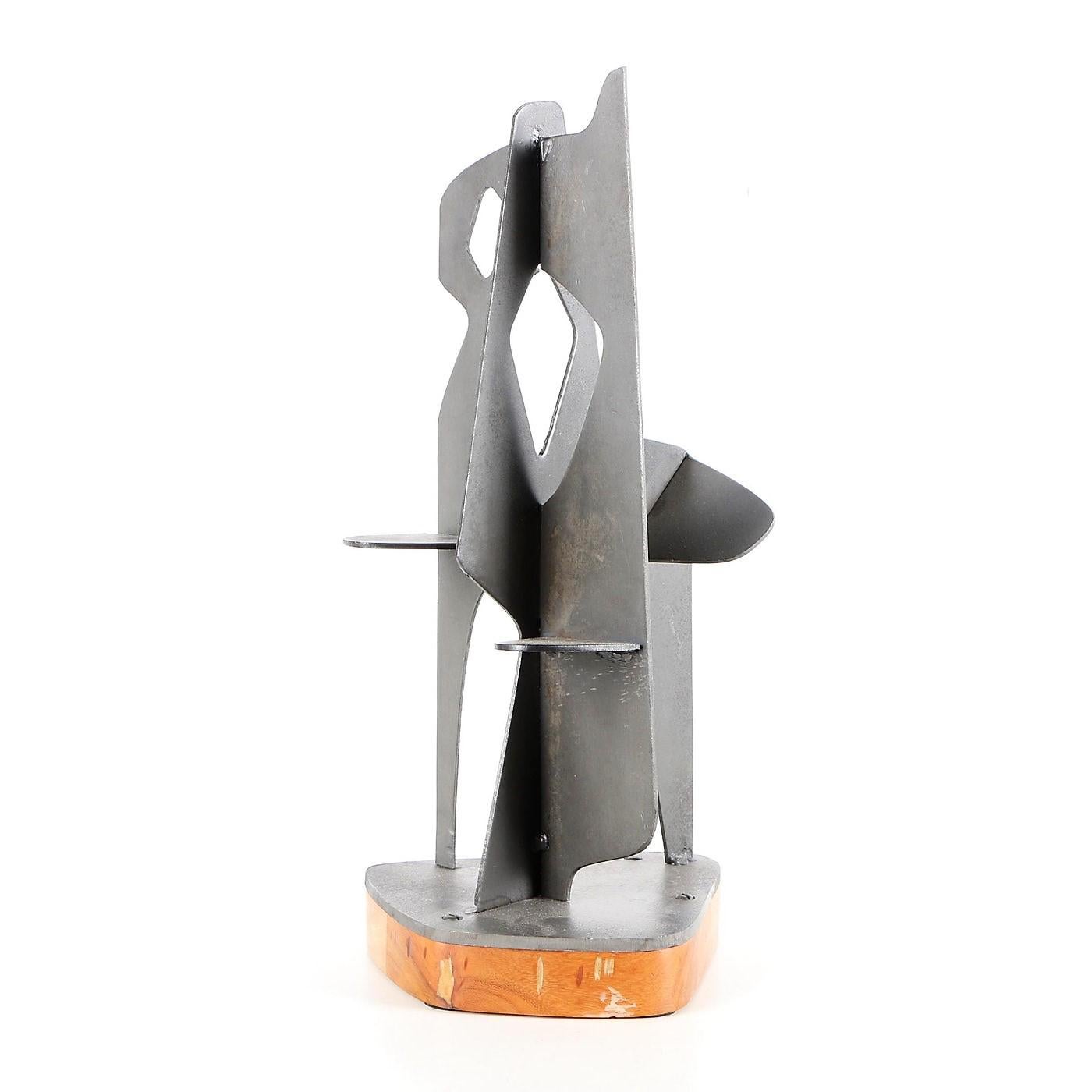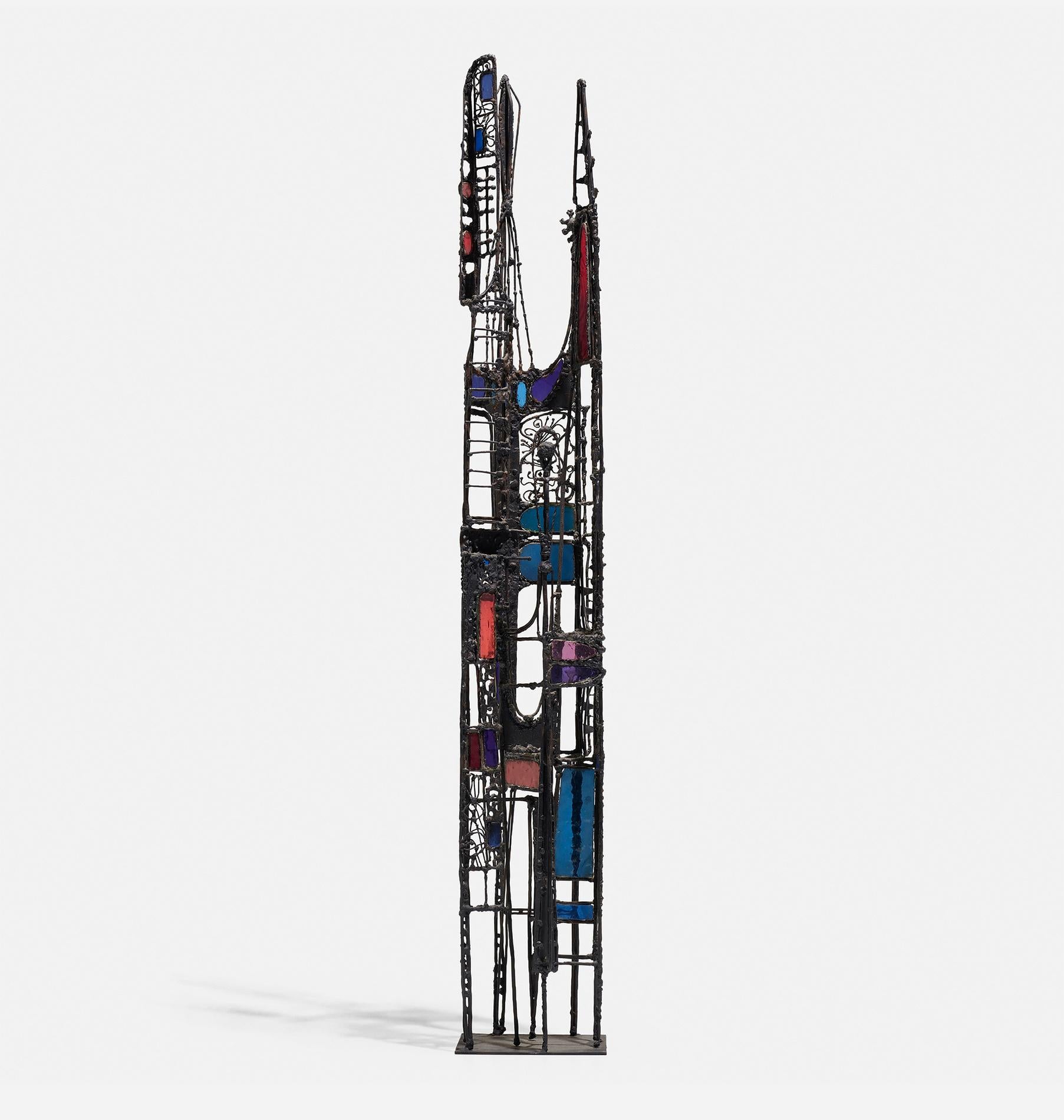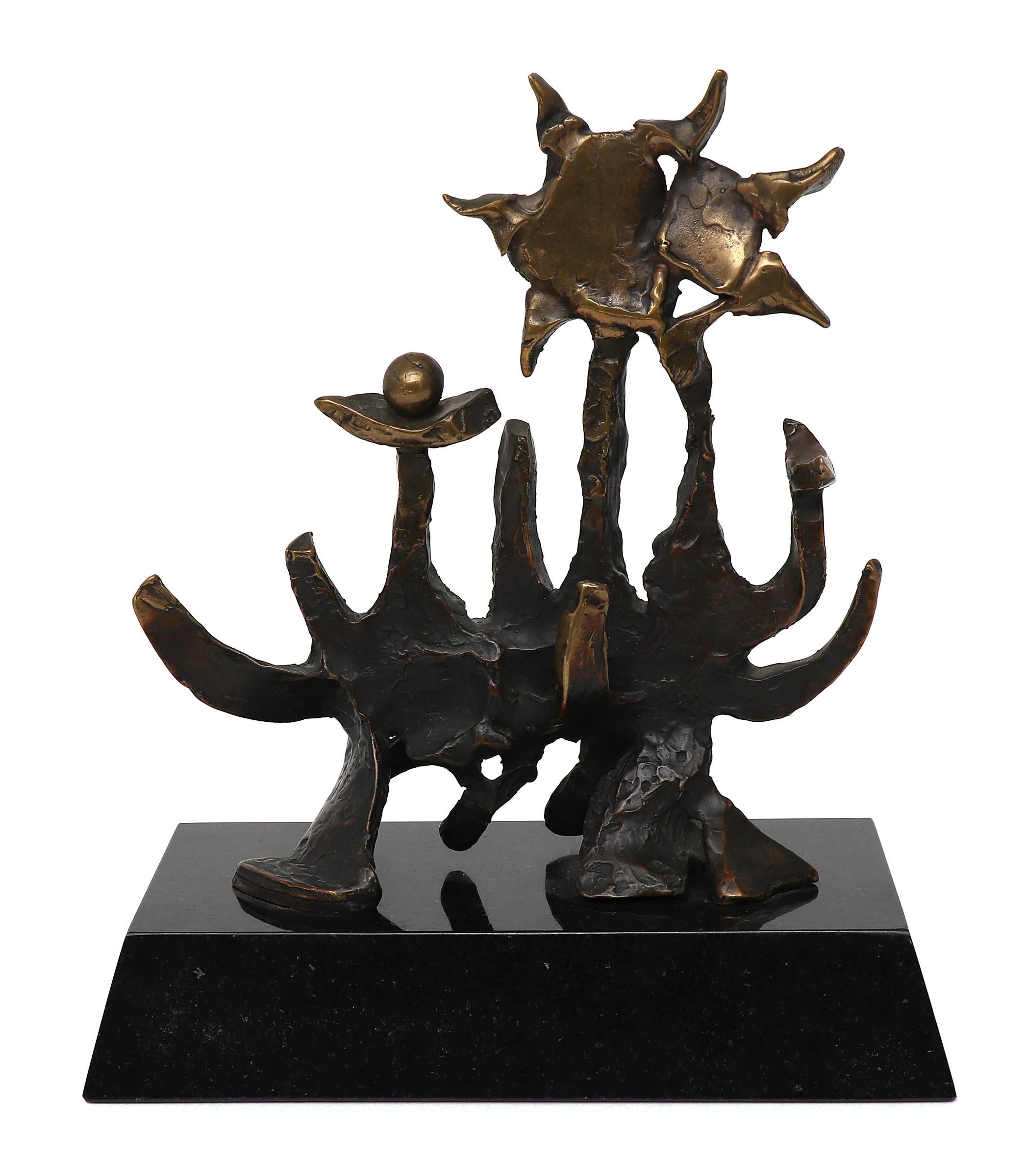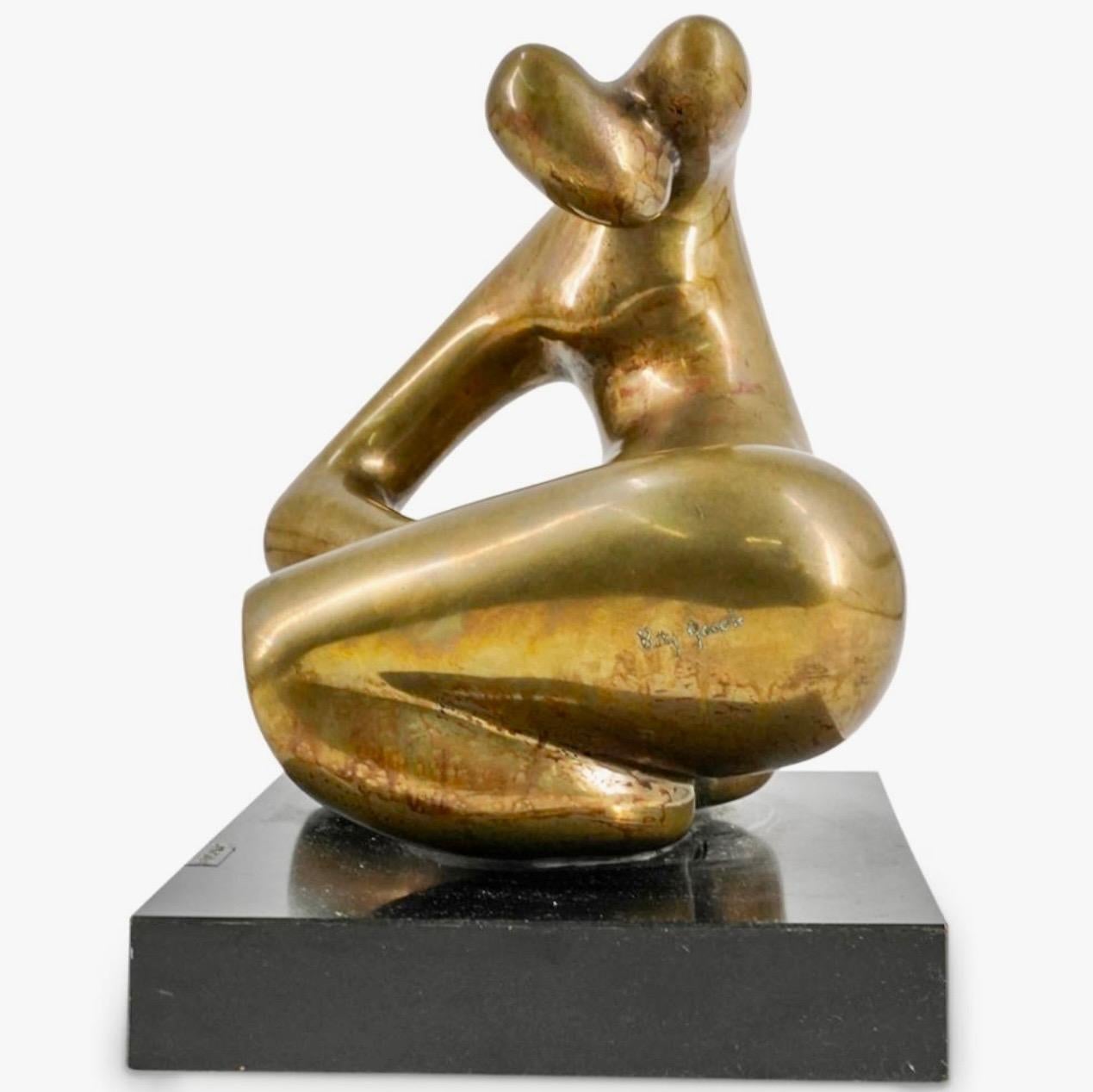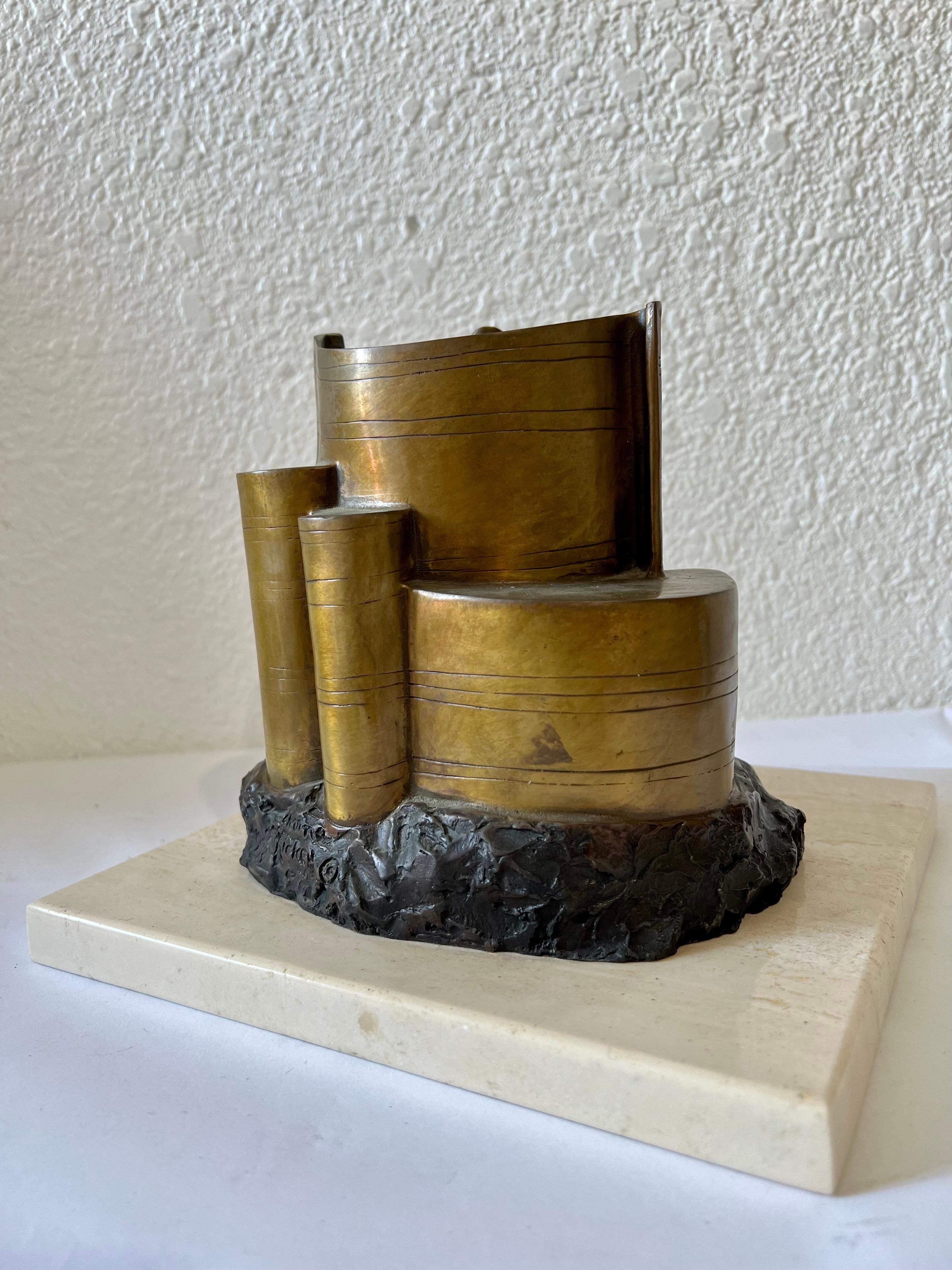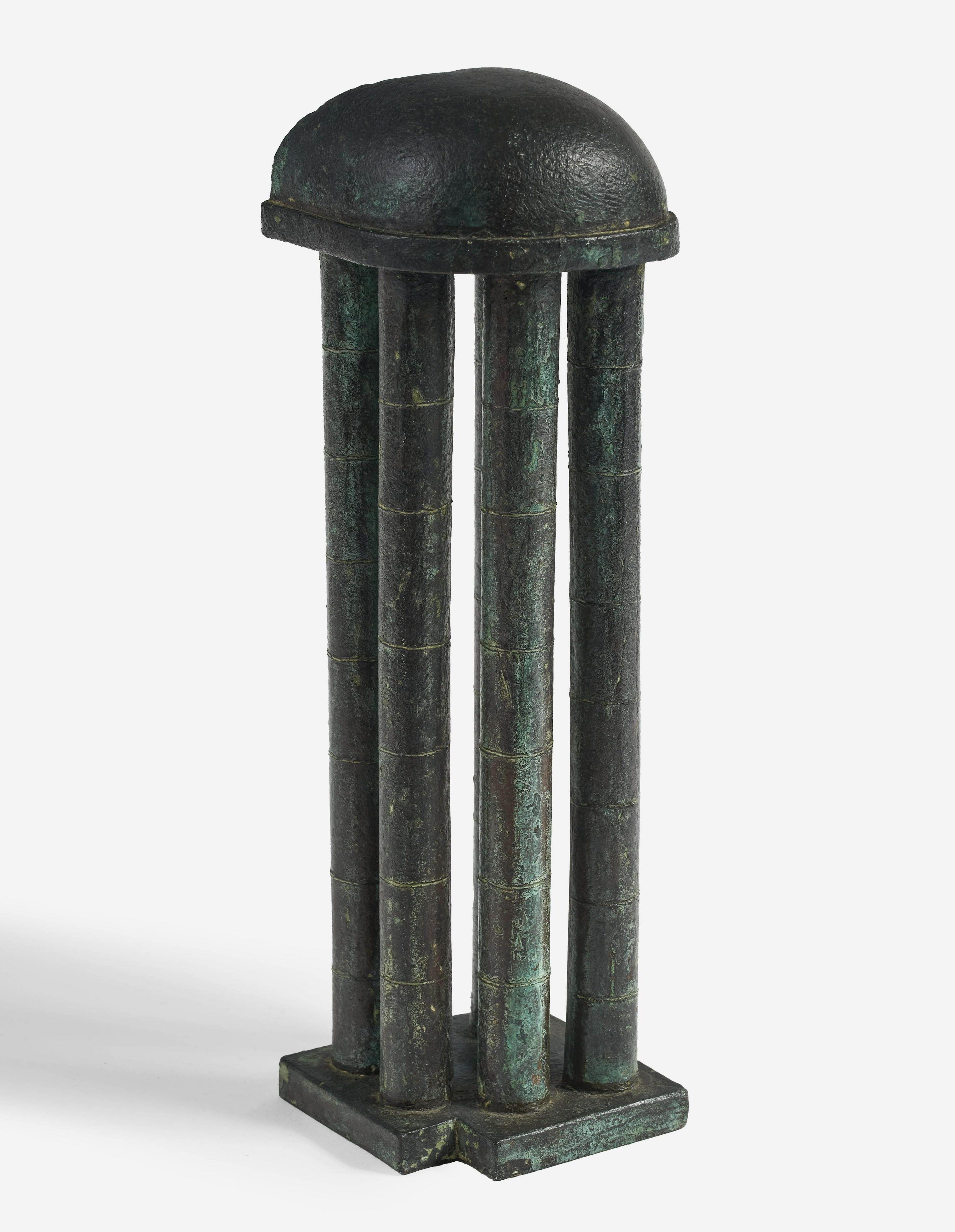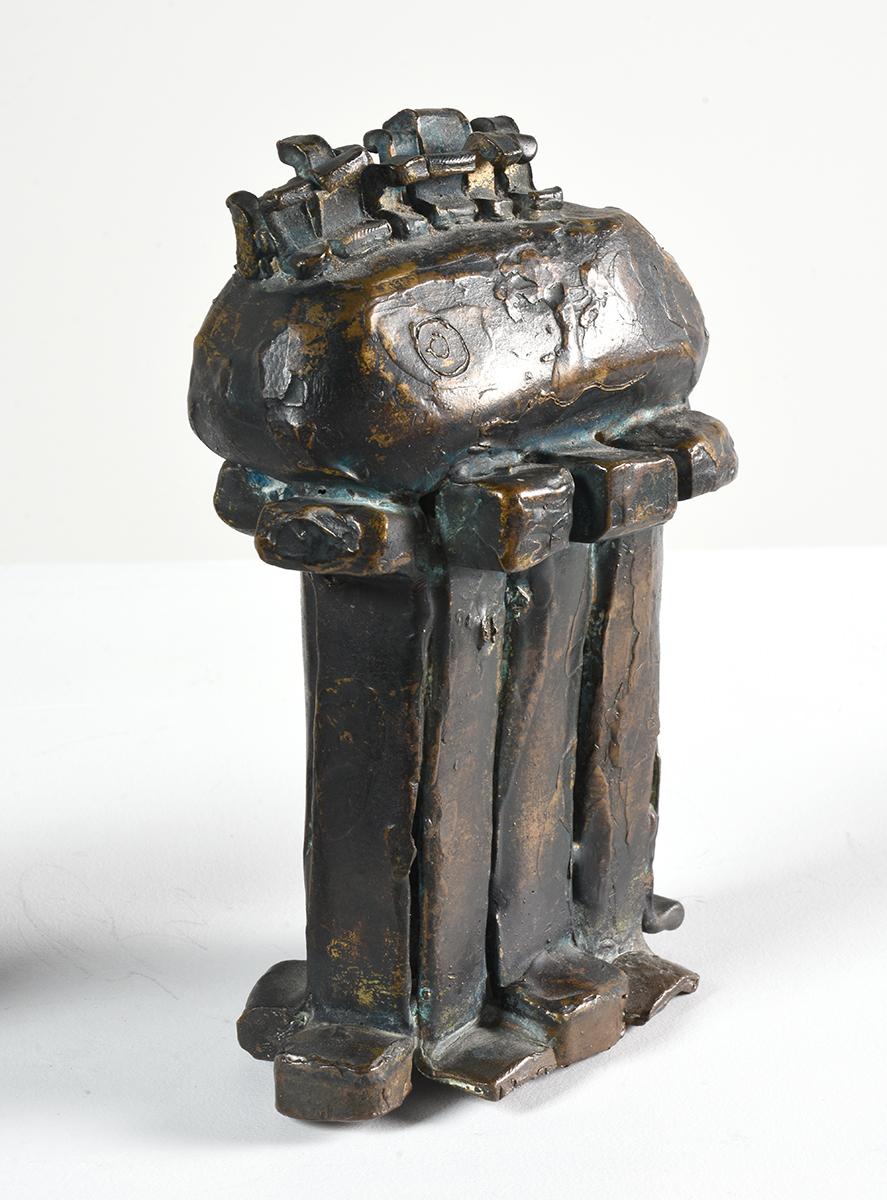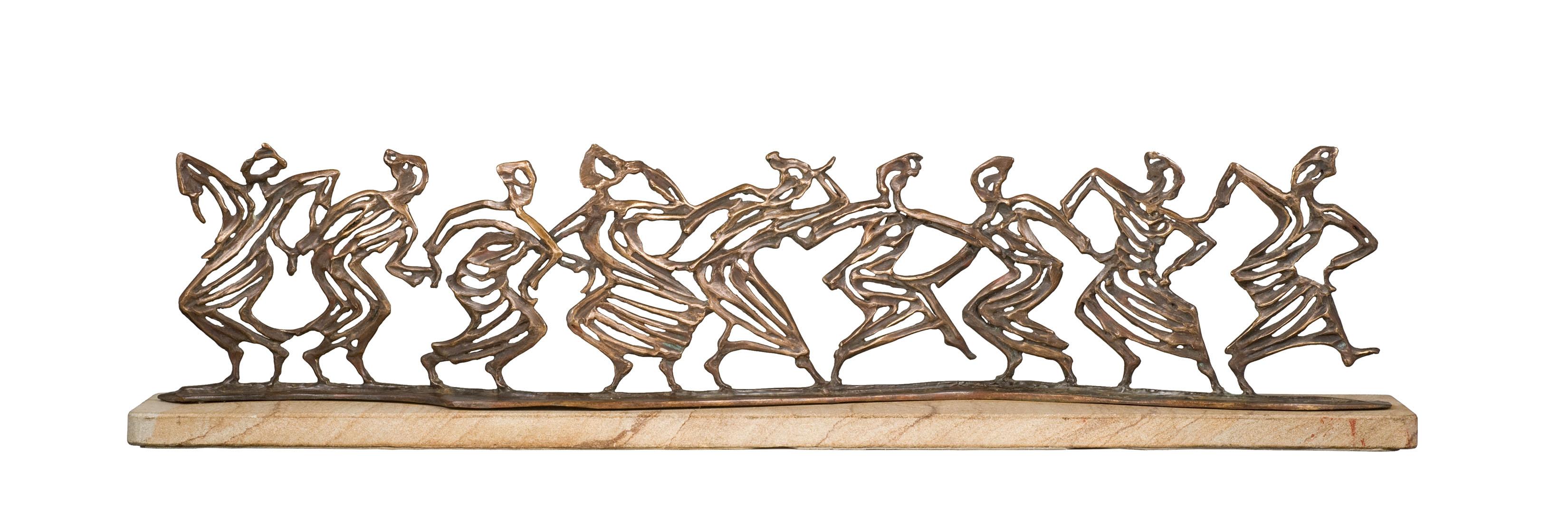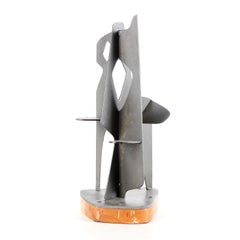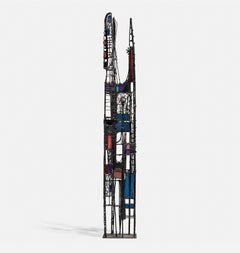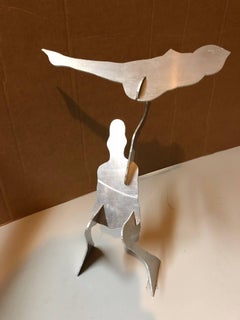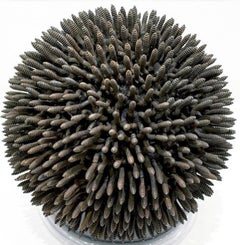
SCREWBALL
1 of 4
Michael MalpassSCREWBALL1982
1982
About the Item
- Creator:Michael Malpass (1946 - 1991, American)
- Creation Year:1982
- Dimensions:Height: 12 in (30.48 cm)Diameter: 12 in (30.48 cm)
- Medium:
- Movement & Style:
- Period:
- Condition:
- Gallery Location:Sea Bright, NJ
- Reference Number:1stDibs: LU74934550471
You May Also Like
- John-Paul Philippe, "Untitled", table top abstract steel sculpture on wood baseBy John-Paul PhilippeLocated in Glenview, IL"Untitled" is an abstract steel sculpture on a wood base by New York based contemporary artist John-Paul Philippe. The artist was born in 1955 and began his career as a painter.Due t...Category
1990s American Modern Abstract Sculptures
MaterialsSteel
- Mid-Century Metal and Colored Glass Sculpture - Like Stained GlassLocated in Miami, FLMid-Century enameled steel, glass sculpture that is visually balanced from 360 degrees. All the positive and negative spaces work in total harmony which is a testament to Samuel Cashwan...Category
1950s American Modern Abstract Sculptures
MaterialsSteel
- The Test, Assembled Kinetic Modernist Sculpture Puzzle ConstructionBy William King (b.1925)Located in Surfside, FL"The Test," 1970 Aluminum sculpture in 5 parts. Artist's cipher and AP stamped into male figure, front, 20 5/16" x 12 1/2" x 6 5/7" (approx.) American sculptor King is most noted for his long-limbed figurative public art sculptures depicting people engaged in everyday activities such as reading or conversing. He created his busts and figures in a variety of materials, including clay, wood, metal, and textiles. William Dickey King was born in Jacksonville, Florida. As a boy, William made model airplanes and helped his father and older brother build furniture and boats. He came to New York, where he attended the Cooper Union and began selling his early sculptures even before he graduated. He later studied with the sculptor Milton Hebald and traveled to Italy on a Fulbright grant. Mr. King worked in clay, wood, bronze, vinyl, burlap and aluminum. He worked both big and small, from busts and toylike figures to large public art pieces depicting familiar human poses — a seated, cross-legged man reading; a Western couple (he in a cowboy hat, she in a long dress) holding hands; a tall man reaching down to tug along a recalcitrant little boy; a crowd of robotic-looking men walking in lock step. Mr. King’s work often reflected the times, taking on fashions and occasional politics. In the 1960s and 1970s, his work featuring African-American figures (including the activist Angela Davis, with hands cuffed behind her back) evoked his interest in civil rights. But for all its variation, what unified his work was a wry observer’s arched eyebrow, the pointed humor and witty rue of a fatalist. His figurative sculptures, often with long, spidery legs and an outlandishly skewed ratio of torso to appendages, use gestures and posture to suggest attitude and illustrate his own amusement with the unwieldiness of human physical equipment. His subjects included tennis players and gymnasts, dancers and musicians, and he managed to show appreciation of their physical gifts and comic delight at their contortions and costumery. His suit-wearing businessmen often appeared haughty or pompous; his other men could seem timid or perplexed or awkward. Oddly, or perhaps tellingly, he tended to depict women more reverentially, though in his portrayals of couples the fragility and tender comedy inherent in couplehood settled equally on both partners. His first solo exhibit took place in 1954 at the Alan Gallery in New York City. King was elected to the American Academy of Arts and Letters in 2003, and in 2007 the International Sculpture Center honored him with the Lifetime Achievement in Contemporary Sculpture Award. Mr. King’s work is in the collections of the Metropolitan Museum of Art, Guggenheim Museum, Whitney Museum and the Museum of Modern Art in New York and the Hirshorn Museum at the Smithsonian American Art Museum in Washington, among other places, and he had dozens of solo gallery shows in New York and elsewhere. Reviews of his exhibitions frequently began with the caveat that even though the work was funny, it was also serious, displaying superior technical skills, imaginative vision and the bolstering weight of a range of influences, from the ancient Etruscans to American folk art to 20th-century artists including Giacometti, Calder and Elie Nadelman. The New York Times critic Holland Cotter once described Mr. King’s sculpture as “comical-tragical-maniacal,” and “like Giacomettis conceived by John Cheever.”Category
1970s American Modern Figurative Sculptures
MaterialsMetal
- Helen Shirk Sculpture Hand Crafted Studio Vessel, Copper Patina, Colored PencilsLocated in Surfside, FLTitle: Red Pod, CV110V, San Diego, 1997 Fabricated, hammered copper, colored pencils, patina. This is not signed. It bears a label on the interior and the artist has kindly confirmed the attribution to me. Helen Shirk...Category
1990s American Modern Abstract Sculptures
MaterialsCopper
- American Modern Abstract Metalwork Sculpture, Mid Century Modern Table SculptureBy Angelo Di BenedettoLocated in Denver, COOriginal vintage abstract metalwork sculpture by artist Angelo Di Benedetto (1913-1992). Measures 13 ¼ x 11 ¼ x 7 ½ inches. About the Artist: Born New Jersey 1913 Died Central City, CO 1992 The son of Italian immigrants from the Salerno province in southern Italy, as a teenager Di Benedetto worked to study at the Cooper Union Art School in New York City (1930-34) from which he graduated with a certificate in freehand drawing. He won a scholarship to the Boston Museum Art School where he studied for three years, beginning in 1934. In 1937, he entered his first juried exhibition at the Montclair Museum in New Jersey, winning first prize and first honorable mention. In December 1938, the Royal Netherlands Steamship Line sent him on a two-month ethnological study trip to Haiti, his first exposure to a different environment outside the United States. In 1940, his Haitian paintings were exhibited at the Montross Gallery in New York – his first solo show. Before World War II, Di Benedetto traveled extensively around the United States doing regional paintings. During the war in 1941, Di Benedetto volunteered for a secret mission based in Eritrea, Africa before the Allied invasion. Following Africa, he served as an orientation officer and aerial photographic officer in the District of Columbia. In 1945 he was assigned to a mapping unit at Buckley Airfield in Denver where he served until his discharge in 1946. Like many other servicemen stationed at the time in Colorado, Di Benedetto chose to remain in Colorado, impressed by the state’s physical grandeur and healthful climate. He settled in the old mining town of Central City in 1947. In 1949 Di Benedetto and his wife, ceramist Lee Porzio, opened the Benpro Art School in his studio where he conducted summer art classes. In 1950, Di Benedetto teamed up with Frank Vavra...Category
20th Century American Modern Abstract Sculptures
MaterialsMetal
- American Modern Abstract Bronze Sculpture on Granite Stand, Edward ChavezBy Edward Arcenio ChavezLocated in Denver, COAbstract bronze sculpture mounted on granite base by Edward (Eduardo) Arcenio Chavez (1917-1995). Measures 7 ½ x 6 x 2 inches, including stand. Sculpture is in very good to excellent condition - please contact us for a detailed condition report. About the Artist: Born 1917 Died 1995 Born in Wagonmound, New Mexico, Eduardo Chavez...Category
20th Century American Modern Abstract Sculptures
MaterialsGranite, Bronze
Recently Viewed
View AllMore Ways To Browse
Metal Sculpture 1989
Arc Sculpture
Vintage Wire Brush
Forged Iron Sculpture Sculpture
Used Marching Brass
Body Wire Sculpture
Polished Steel Sculpture Brass
Blacksmith Sculpture
Brushed Steel Sculpture
Brass Parsons
Giacometti Bronze Sculpture
Metal Sphere Sculpture
Used Blacksmith Forges
Used Blacksmith Forge
Theodore Major
Betty Parsons Gallery
Welded Wire Sculpture
Alberto Giacometti Bronze Sculpture
